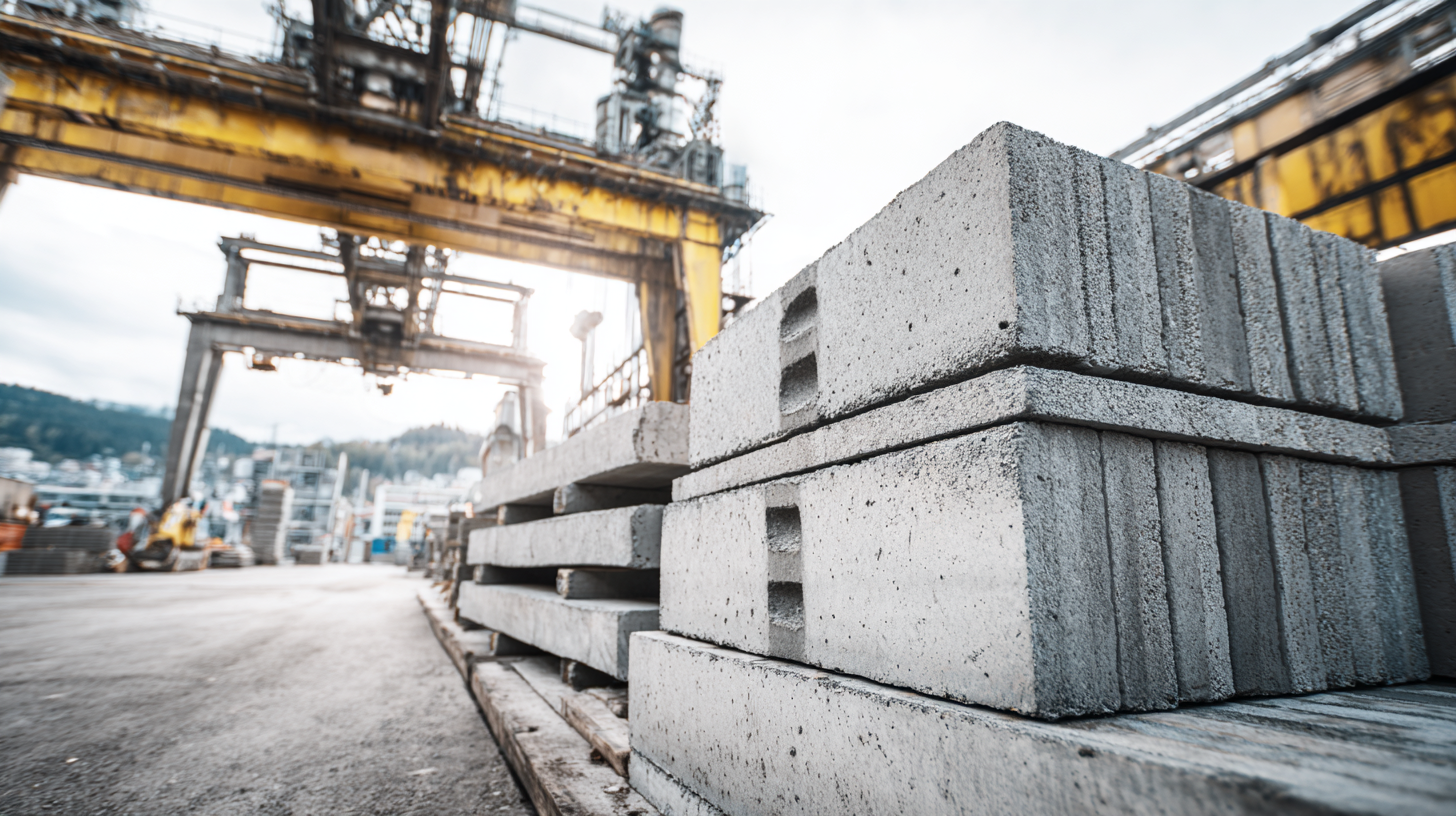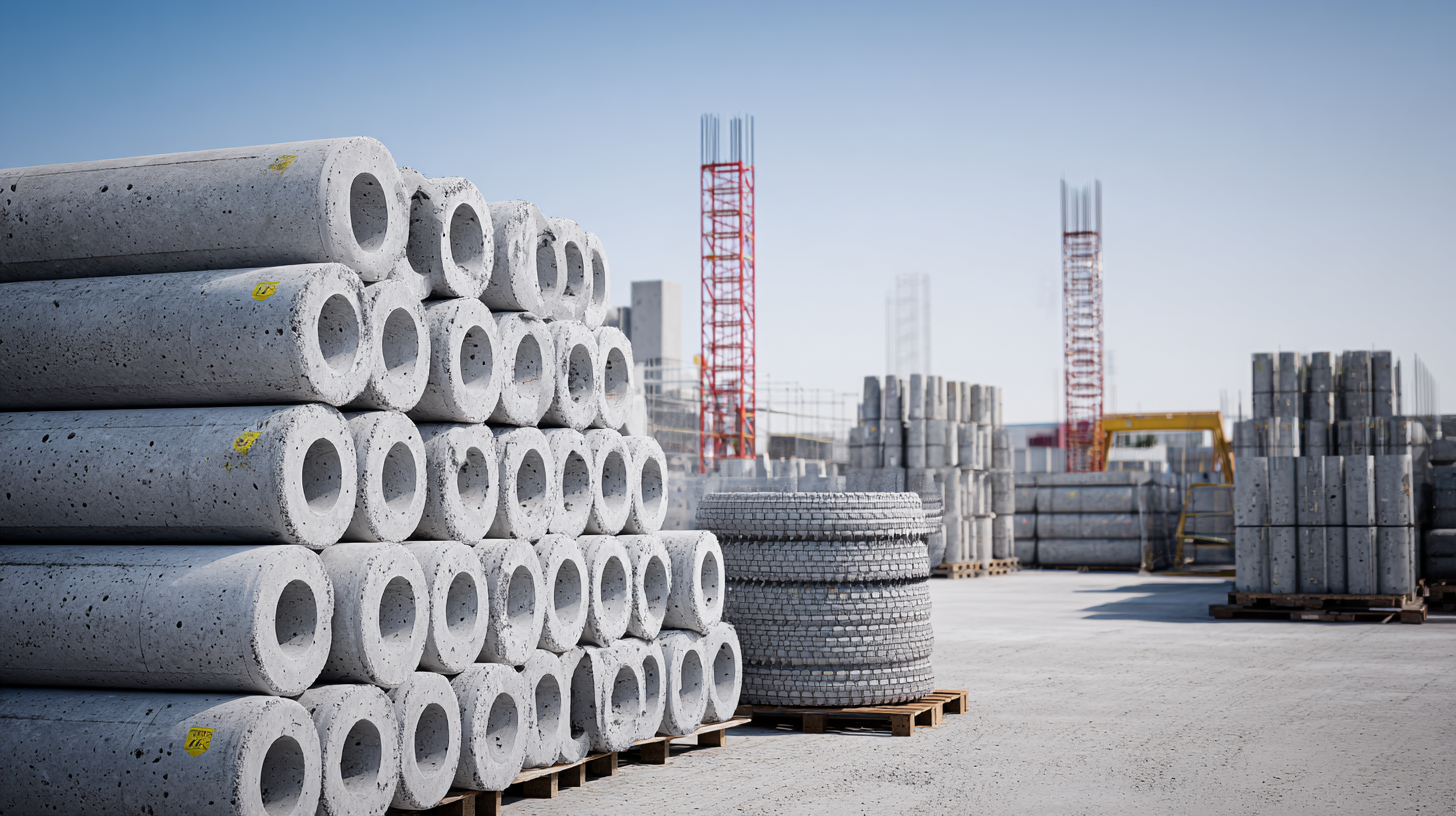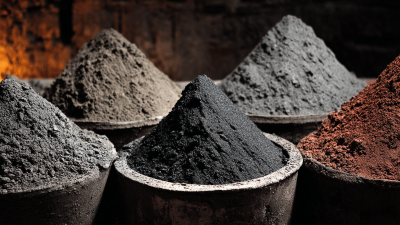Revolutionizing Modern Construction: The Versatility and Benefits of Concrete Products
The construction industry is experiencing a transformative phase, largely driven by the versatility and numerous advantages of Concrete Products. According to a recent report by the Global Cement and Concrete Association, the global concrete market is expected to reach USD 1 trillion by 2025, highlighting the surging demand across various sectors. Concrete Products, ranging from precast components to decorative finishes, are becoming essential in meeting modern architectural demands while ensuring sustainability and energy efficiency. Moreover, research indicates that innovations in concrete technology can reduce greenhouse gas emissions by up to 30%, reinforcing the material's crucial role in promoting eco-friendly construction practices. As the industry continues to evolve, embracing Concrete Products not only enhances structural integrity but also supports a new era of construction that balances aesthetics, functionality, and environmental responsibility.

Innovative Applications of Concrete Products in Contemporary Construction Projects
Concrete has evolved significantly, emerging as a cornerstone in modern construction due to its versatility and innovative applications. Contemporary construction projects leverage concrete products beyond traditional uses, integrating them into sustainable design and structural innovations. For instance, precast concrete elements are increasingly used in building facades, as they provide both aesthetic appeal and energy efficiency. These elements can be produced off-site, allowing for faster assembly on location and reducing overall construction time.
Moreover, the advent of 3D printing technology has opened new avenues for concrete applications. Architects and engineers are now able to create complex structures that were previously deemed unfeasible. This technology not only minimizes waste but also allows for customization in design. Additionally, concrete’s inherent properties, such as durability and low maintenance requirements, make it an ideal choice for infrastructures like bridges and tunnels, which must withstand the test of time while accommodating modern loads and usage patterns. The innovative use of concrete in these various capacities underscores its integral role in revolutionizing contemporary construction methods.
Revolutionizing Modern Construction: The Versatility and Benefits of Concrete Products
| Application | Product Type | Benefits | Sustainability Aspect |
|---|---|---|---|
| High-Rise Buildings | Precast Concrete Panels | Rapid Assembly, Strength | Recycled Materials Used |
| Road Infrastructure | Concrete Pavements | Durability, Low Maintenance | Long Lifespan Reducing Waste |
| Water Management | Permeable Concrete | Stormwater Management | Promotes Groundwater Replenishment |
| Residential Construction | Insulated Concrete Forms | Energy Efficiency, Noise Reduction | Energy Savings Over Lifecycle |
| Bridges | Reinforced Concrete | Strength, Long Span Capability | Recycled Aggregates Potential |
Sustainability and Environmental Impact of Using Concrete in Building Designs
Concrete products are gradually becoming a cornerstone in the construction industry, particularly due to their sustainability and minimal environmental impact. According to a report by the Global Cement and Concrete Association (GCCA), concrete is responsible for about 8% of global CO2 emissions, but innovative methods are being developed to address this. The integration of alternative materials, such as recycled aggregates, can significantly reduce the carbon footprint while maintaining the strength and durability of structures.
Incorporating sustainable practices in concrete construction leads to improved thermal performance, which can lower energy consumption for heating and cooling. For example, a study from the National Ready Mixed Concrete Association indicates that concrete’s thermal mass can reduce temperature fluctuations in buildings, resulting in energy savings of up to 50% in some cases. This characteristic not only supports energy efficiency but also enhances the comfort of the occupants.
Tips:
- - When choosing concrete products, look for those that utilize recycled materials or innovative mixes that reduce the carbon footprint.
- - Ensure your designs leverage concrete's thermal mass to maximize energy efficiency and comfort in building structures.
Cost-Effectiveness of Concrete Products Compared to Traditional Materials
Concrete products have emerged as a game-changer in the modern construction landscape, primarily due to their cost-effectiveness compared to traditional materials like wood and steel. The inherent durability and longevity of concrete contribute significantly to reduced maintenance expenses over time. Unlike other materials, concrete resists weathering and decay, making it a wise investment for both residential and commercial projects. Furthermore, the initial cost savings can be substantial, particularly for large-scale developments where the volume of materials needed can lead to economies of scale.
Tips: When considering concrete products for your construction needs, evaluate local suppliers to compare pricing and availability. Look into prefabricated concrete options, which can further reduce labor costs and construction time. Additionally, explore using recycled concrete aggregates, which not only lower expenses but also promote sustainability in your project.
Utilizing concrete products also allows for greater design flexibility, enabling architects and builders to create innovative structures without compromising on budget. This adaptability, combined with the reduced lifecycle costs, makes concrete an attractive option for various construction applications, from foundations to decorative elements. Taking advantage of these benefits can lead to enhanced project efficiency and sustainability in the ever-evolving construction industry.
Cost-Effectiveness of Concrete Products Compared to Traditional Materials
Enhancing Durability and Longevity: The Benefits of Advanced Concrete Technologies
Concrete has long been a staple in construction, but advances in concrete technologies have significantly enhanced its durability and longevity, thereby revolutionizing modern building practices. According to a report by the Global Cement and Concrete Association, innovative concrete formulations can increase longevity by up to 50%, reducing the need for frequent repairs and replacements. This is especially crucial in areas prone to harsh weather conditions and natural disasters where traditional materials might fail more rapidly.

Moreover, the implementation of smart concrete technologies, such as self-healing concrete and high-performance concrete (HPC), has shown promising results. A study published in the American Concrete Institute's Journal indicates that self-healing concrete can drastically cut maintenance costs by providing an automatic repair mechanism for minor cracks, extending the overall lifespan of structures. These advancements not only decrease the carbon footprint associated with material production but also assure clients of the long-term sustainability of their investments. As industry professionals increasingly adopt these cutting-edge solutions, the benefits of modern concrete products become evident, reshaping the landscape of construction.
Versatility of Concrete in Diverse Architectural Styles and Urban Landscapes
 Concrete has emerged as a cornerstone material in modern construction, offering remarkable versatility that accommodates various architectural styles and urban landscapes. Its adaptability allows architects to transcend traditional limitations, seamlessly integrating concrete into everything from minimalist designs to elaborate, contemporary structures. The malleability of concrete enables it to be sculpted into intricate forms, making it an ideal choice for innovative buildings that require a unique aesthetic while maintaining functional integrity.
Concrete has emerged as a cornerstone material in modern construction, offering remarkable versatility that accommodates various architectural styles and urban landscapes. Its adaptability allows architects to transcend traditional limitations, seamlessly integrating concrete into everything from minimalist designs to elaborate, contemporary structures. The malleability of concrete enables it to be sculpted into intricate forms, making it an ideal choice for innovative buildings that require a unique aesthetic while maintaining functional integrity.
Furthermore, concrete's robust characteristics ensure its suitability for diverse environments, whether in serene residential neighborhoods or bustling urban centers. Designers are increasingly employing concrete not only for structural elements but also as a prominent design feature. Its ability to be finished in various textures and colors enhances its appeal, allowing it to harmonize with surrounding materials like glass and steel. As cities evolve, the use of concrete products in public spaces—such as parks, walkways, and plazas—contributes to the durability and sustainability of urban landscapes, showcasing how this traditional material can redefine modern construction.
Related Posts
-

10 Essential Tips for Choosing the Best Concrete Products in 2023
-

Unveiling the Technical Specifications of the Best Concrete Specialties for Optimal Performance
-

5 Essential Tips for Sourcing Wholesale Concrete Without Compromising Quality
-

How to Transform Your Outdoor Space with Creative Landscaping and Concrete Solutions
-

Experience Unmatched Quality Gravel Delivery from Leading Chinese Manufacturers
-

Unlocking Efficiency: How Real-Time Concrete Delivery Tracking Can Transform Your Project Management
